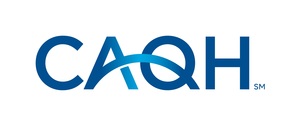WASHINGTON, Jan. 31, 2022 /PRNewswire/ -- CAQH today released the ninth annual report measuring the progress healthcare payers and providers are making to use electronic business processes. The 2021 CAQH Index found that adoption of electronic administrative transactions increased on average by 2.3 percentage points across the medical and dental industries. This shift was driven, in part, by the challenges of virtual work environments during the pandemic. The Index further found that the volume of transactions fell by 11 percent and three percent for the medical and dental industries, respectively, as providers and patients cancelled or postponed appointments and elective procedures.
"The 2021 CAQH Index uncovered important shifts in healthcare administrative operations during the pandemic, some of which could have lasting implications," said April Todd, CAQH Senior Vice President, CORE and Explorations. "Social distancing, remote work and an increase in the use of telemedicine have resulted in greater levels of automation today and additional opportunities for savings in the future."
Every year, the CAQH Index tracks automation, spending and savings opportunities for administrative transactions related to verifying insurance coverage and cost sharing, obtaining authorization for care, submitting claims and supplemental information, and sending and receiving payments. The report categorizes transactions by whether they are fully automated, partially electronic or manual. This year's Index considers the impact of the pandemic on business processes and spending.
The 2021 CAQH Index found that, of the estimated $391 billion spent on administrative complexity in the United States healthcare system, $42 billion, or 11 percent, is spent conducting nine common transactions. Of the $42 billion, the industry can save $20 billion, or 48 percent of existing annual spend, by transitioning to fully electronic transactions. This savings opportunity is 24 percent greater than that found in the previous report. This change was driven by higher medical costs for a lower volume of more complex manual transactions and lower costs for electronic transactions.
Despite the decrease in overall medical transaction volume and growth in electronic adoption, total annual medical spend increased 12 percent as manual transactions required more intensive intervention to ensure that newly implemented requirements and codes were executed correctly, and that patient medical data was current and accurate.
"After an extraordinarily challenging two years in healthcare, the industry's progress toward automated and efficient administrative processes is encouraging," said Todd. "Our experience during the pandemic has also highlighted future opportunities for savings through automation."
To read the full 2021 CAQH Index, click here.
Register for a CAQH webinar discussing these findings being held on February 9th, 2021 at 2:00 pm ET.
About CAQH
For more than 20 years, CAQH has helped nearly 1,000 health plans, 1.6 million providers, government entities and vendors connect, exchange information and operate more efficiently. CAQH technology-enabled solutions and its Committee on Operating Rules for Information Exchange (CORE) bring the healthcare industry together to make sharing business information more automated, predictable and consistent. CAQH Explorations researches opportunities to reduce the burden of manual processes in healthcare administration. Visit http://caqh.org/ and follow us on Twitter: @caqh.
SOURCE CAQH

WANT YOUR COMPANY'S NEWS FEATURED ON PRNEWSWIRE.COM?
Newsrooms &
Influencers
Digital Media
Outlets
Journalists
Opted In




Share this article